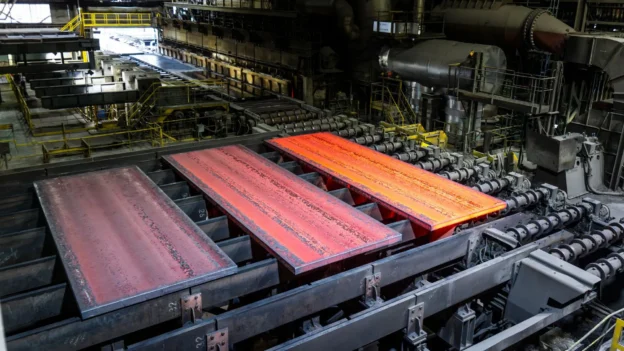Swedish steelmaker SSAB has succeeded in producing near-zero CO2-emitting steel, the first in the world to meet the strict thresholds of the International Energy Agency (IEA) and the First Movers Coalition (FMC). The company has named this product SSAB Zero™ and it is made from recycled steel and is produced with carbon-free electricity and biogas.
How was this achieved?
The production of the SSAB Zero™ is achieved by combining several processes, such as HYBRIT® technology, which replaces coking coal with hydrogen produced with fossil-free energy, generating water vapor as a by-product, not CO2. In addition, the entire manufacturing process, including the operation of the electric arc furnaces, uses non-fossil electricity and renewable natural gas.
Finally, near-zero-emission steel is produced mainly from recycled scrap, which means that it is 100% recyclable at the end of its useful life, closing the cycle in a sustainable manner.
What are the implications of this achievement?
- Meeting IEA and FMC requirements means that the reduced emissions have been independently validated against rigorous scientific standards.
- Because it is already commercially available, companies such as GE Vernova and Volvo Cars have already begun using SSAB Zero™ steel for their products, such as wind towers and components of electric vehicles.
- It enables companies such as GE Vernova and Volvo (which also has an agreement with SSAB) to decarbonize their supply chains.
- The adoption of SSAB steel by other members of the FMC, a global alliance that seeks to drive the decarbonization of difficult sectors, demonstrates a commercialized move towards low-emission steel production and consumption.
SSAB Zero™ steel will be used by GE Vernova to manufacture wind turbines and decarbonize the wind farm supply chain. Source: SSAB.
A step towards the decarbonization of steel
Validation by the IEA puts SSAB at the forefront of the decarbonization of the steel industry. Although the first announced use is in wind towers, the steel is designed to work in other sectors such as automotive, where Volvo will also be a customer, construction, mining and heavy machinery.
This achievement is a glimpse of how the transition to a CO2-free heavy industry is moving at a steady pace and sets a new bar for what is considered “green steel”.
Source: SSAB


